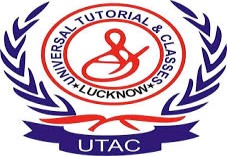There are three different methods of preparation for the LSAT: self-studying, group instruction, and personal/private instruction. Students can successfully achieve elite scores regardless of their chosen method, and although no single method has been proven ‘best’ at preparing students for the LSAT—assessing certain factors like a student’s study habits, preferred learning environment, and overall intended time investment will help determine that student’s modus operandi.
LSAT Study Habits
Psychologists say that personalities fall into two categories: Type-A and Type-B. Type-A individuals are generally characterized as “workaholics,” they’re also thought of as being more self-organized and they constantly worry about time-management. These individuals naturally prefer and perform better in a high-stress environment. By contrast, Type-B individuals are instinctively more easy-going; they perform better in lower-stress settings, and they don’t feel the need to adhere as tightly to their routines. Because study habits can be heavily governed by personality-type, identifying yourself as a Type A or B individual may help you determine the most suitable approach.
If you’re a Type-A individual—it’s likely you have the engrained time-management skills to reap more benefits from self-studying than a Type-B individual. That doesn’t mean Type-B individuals don’t benefit from self-studying; all individuals benefit from self-studying. However, because at times people with a Type-B personality don’t have the strictest adherence to self-scheduling, it’s easier for them to fall off-track when they approach the LSAT in a self-study manner.
If you’re a Type-B individual—you’re probably going to benefit most from ‘provided’-structure. As such, going the route of group or private instruction might be worth your while. These forms of instruction will generally provide you with a study-schedule, assignments, homework, and most importantly—guidance. Because of the set-routine these methods of preparation instill, you’ll be able to approach the LSAT methodically, without having to worry about independently keeping yourself organized. Moreover, in the case your progression starts to slip—you’ll have an experienced mentor ready to point you back in the right direction!
Learning Environment
Ask yourself this question, “In what setting do I learn best?” (reading text, lecture, group, etc.)
If you’re someone that absorbs little information in a classroom setting, there’s no reason for you to be spending time and money attending an LSAT course that’s classroom-based. You’re not going to learn much in class anyways and you’ll probably end up self-studying the material or investing in a private LSAT tutor. Conversely, if you have a hard time studying independently, you’ll probably find the structure provided by group or private one-on-one instruction to be the most effective approach. Many LSAT students enjoy a classroom setting, particularly because they enjoy listening to an instructor explain other student’s questions. Others excel in a classroom setting because they find the presence of like-minded individuals motivating. There are also plenty of students that prefer the complete and undivided attention of their instructor, in which these students would be best served by private LSAT tutoring.
Time Investment
The method you decide to go with will ultimately dictate the time investment needed to reach your goal score. Choosing the right method from the start means you’ll be hanging-out with friends again sooner rather than later. Reiterating the fact that there is no “best” method of LSAT preparation for everyone. Students that choose to go the personal tutoring route generally have an upper hand in the time investment department. Because personal one-one-one LSAT tutoring is structured solely around the weaknesses and of the needs of the individual, privately instructed students tend to see improvements in their scores and accuracy while spending quantitatively less time studying. Of course, that doesn’t mean students self-studying or in a group instruction setting don’t see score increases—it just takes longer to address specific topics students might be struggling with. Contrariwise to privately instructed students, students that self-study the LSAT in its entirety tend to invest greater amounts of time in order to reach their target scores, simply because it’s difficult to assess and target weaknesses one is unfamiliar with.
At the end of the day, if you invest enough time into preparing for the LSAT via a single method, you’ll likely reach your target. With that said, time is valuable. If you’ve used a single method of preparation for period of time unsatisfactorily, it’s probably time to look into an approach that provides you with greater personal growth. If you’ve already completed an LSAT course and haven’t met your goal, don’t simply register yourself for another LSAT course that’s going to provide you with the same mode of instruction, consider an alternative strategy that may be more beneficial for you!
You Might Want To Read:
Ugc Net Commerce June 2011 Paper Iii Question Paper 8, Iit Jam Mathematics Question Paper 2014, Physics Question Paper 4 2013, Nios Question Paper Class 12Th 2016 33, Saraswati Mahila Mahavidyalaya, Alccs System Software Mock Test Paper 6, Chemistry Environmental Chemistry Sample Paper With Solutions, Instructions For Jee Main 2018 Password, Buddhist Jain Peace Study Solved Question Paper 2 2012, Upsc Cs Mains Commerce Accountancy Paper I Ii Question Paper 2013
Leave your vote
This post was created with our nice and easy submission form. Create your post!










Like what you read? Give author a thumbs up?
Bookmark this article to read later, drop a remark in comment section and share with your friends..